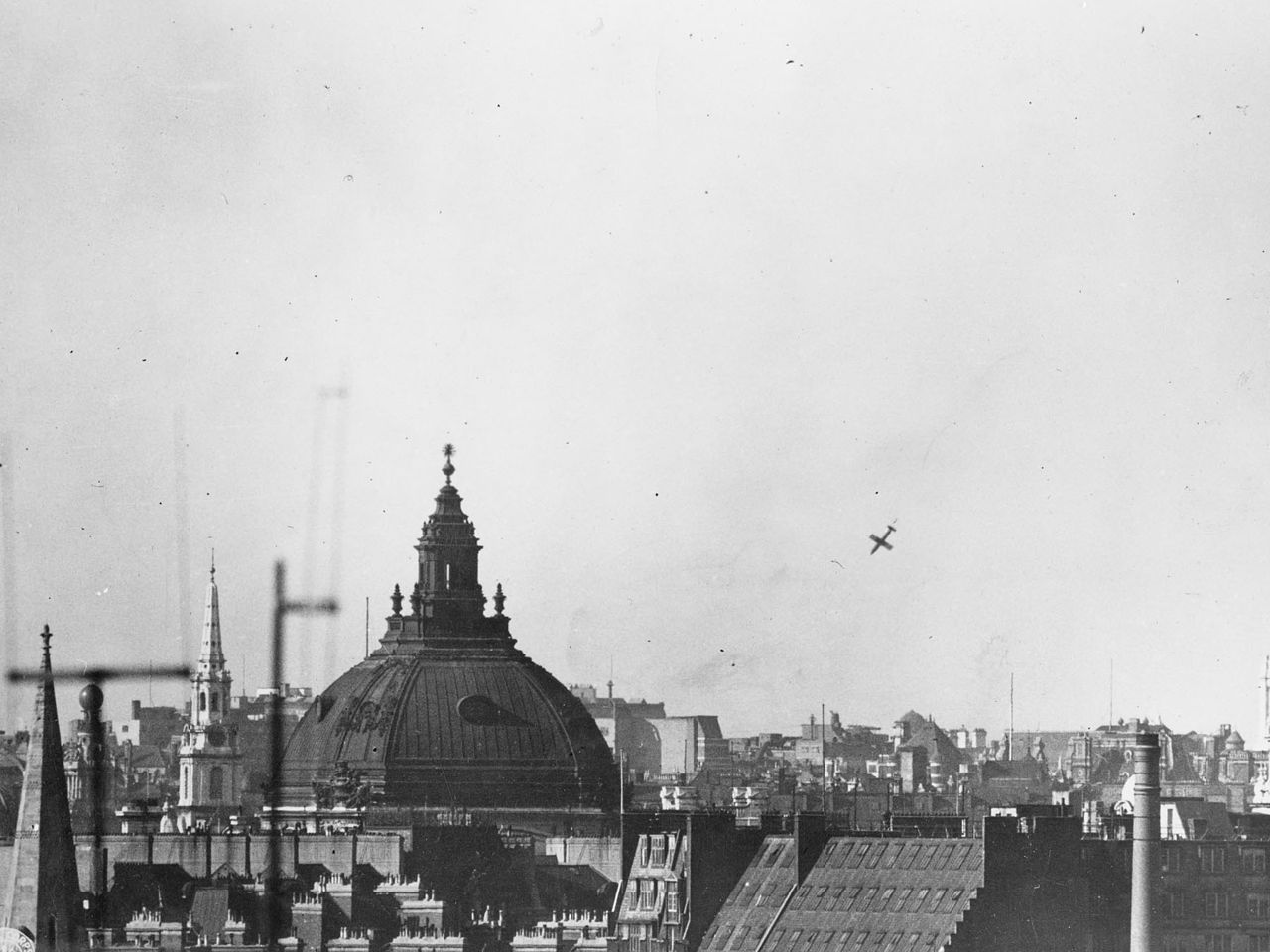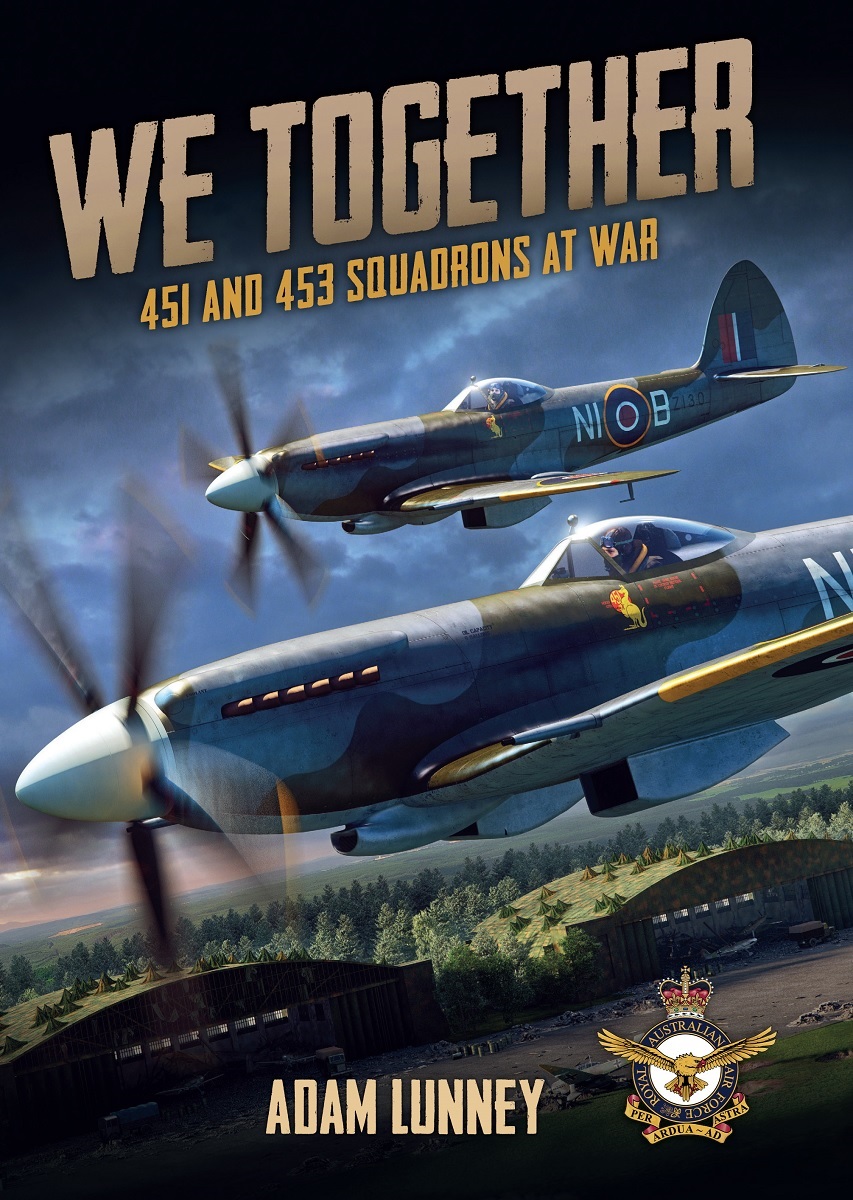In July and August 1944 approximately 30 percent of RAF Bomber Command sorties and tonnage was directed against V-1 and V-2 sites, as was about 20 percent of US Eighth Air Force sorties and tonnage.
The following article contains excerpts from Adam Lunney’s book We Together, 451 and 453 Squadrons at War.
Before the Second World War, rocketry was a novel form of weapon, and the British made an effort to monitor German advances. The German Army first asked for specific rocket designs that could carry warheads in 1931, and by 1939 a program was in place and active. Hitler didn’t show much interest in the project until it was suggested to launch 5,000 V-2 rockets (also known as A-4 rockets) in England in April 1942. As rocketry could not be left to the army (because of ongoing inter-service rivalry), the Luftwaffe developed their own designs and named their weapon the FZG76, which later came to be known as the V-1.
Until Albert Speer became Minister for War Production in March 1943, the 451 and 453 Squadrons at War projects were in direct competition with one another, according to Adam Lunney in We Together, 451 and 453 Squadrons at War. After Speer assumed this position, the two projects’ efforts were combined while additional material and human resources were added. However, in order to learn as much as they could about the projects, the Allies employed spies and interrogation of prisoners.
Continuous aerial photography supported this intelligence, and between March 1943 and March 1944, almost 40% of Allied photo-reconnaissance sorties were focused on locating V-1 and V-2 sites. To find the locations of these weapons’ production, storage, and launch facilities, more than a million pictures were taken.
In March 1944, it was believed that the sites would be fixed and that heavy bombers would be needed to destroy them. However, later information, such as that acquired from photographic sorties, revealed that V-2 sites were actually relatively simple squares of concrete where the transporter unit would park its portable equipment prior to the launch. Around 20% of the US Eighth Air Force’s sorties and tonnage in July and August 1944 and 30% of the RAF Bomber Command’s were both targeted at V-1 and V-2 sites. Standing instructions set out the code words to be used in reference to the V-weapons:
- Crossbow: All general references to long-range weapons.
- Big Ben: For use in reference to long-range rockets.
- Diver: For use in reference to pilotless aircraft.

Operation Hydra, a raid on Peenemunde in August 1943 by 596 RAF bombers (crewed by men from all across the Commonwealth), alerted the Germans to Allied knowledge of their actions and caused the facilities to be dispersed, making following raids less successful. 40 bombers were lost that night, along with 243 aircrew members and 45 detainees. Compare this to Fighter Commands losing roughly 537 pilots throughout the Battle of Britain, which lasted over four months, to show the severity of Bomber Commands’ operations.
One person’s loss is not greater than another’s, and one person’s sacrifice is not less than another’s, but the rate of loss in Bomber Command is frequently disregarded. On the night of June 12/13, 1944, the V-1 assaults started, and the Allies launched a series of countermeasures to go along with the bombing raids. The fastest fighters, whose job it was to track and fire down the rockets, were taken out of action over Normandy, and a belt of anti-aircraft guns was built up along the coast on expected approaches.
Before Operation Market Garden, the V-1 attacks against England halted because the Allies had taken over most of the coastal areas where they were based. However, with the end of one menace came the beginning of a new one, and on September 8, the first V-2 landed in London. The warhead of this new weapon was only as massive as the V-1, despite its size and speed. Although England was targeted less frequently, other targets like Antwerp and Allied airfields were still within range as the front line changed, as did the launch sites. Operations against the V-1 installations and the facilities connected to them cost the Allies 443 aircraft and 2,924 aircrews by the time the war was over.
Electronic countermeasures, which involved RAF forces stationed in coastal areas with signaling equipment trying to detect the signals connected with a V-2 rocket launch and then trying to jam that signal, were one strategy that was intended to be used to combat the V-2 rockets. Any movement had to be almost instantaneous because it was thought that radio control was only available for the first 40 to 70 seconds of the V-2’s flight.
These presumptions were based on how the Luftwaffe used its radio-controlled HS 293 bomb, which was fired from an aircraft and subsequently guided to its target by the bomb aimer. The Luftwaffe employed radio-controlled bombs of various kinds against Allied ships during the landings at Anzio, where radio-guided bombs sank the LCT35, the liberty ship Elihu Yale, and the HMS Inglefield.
While the electronic countermeasures were thought to be of use, one proven piece of technology was radar, which had been used so successfully during the Battle of Britain in 1940. A number of procedures were put in place, including the shouting of the code word “Big Ben” when a launch was detected, to start the chain of events and communications for the countermeasures to begin. Radar sites along the areas where the rockets were expected to pass were alerted to the potential new threat. The code word “Fireworks” was used to alert the Scientific Observers Office, and the code word “Pop Gun” was to be used by army forces on the continent if they saw rockets being fired.
In August 1944, anti-Big Ben drills were conducted in preparation for the use of these long-range weapons. The actual actions comprised regular “Jim Crow” coastal patrols to look for V-2 launches and escorts to the specially adapted bombers of the RAF 100 Group who would also monitor the area of the Dutch coast to look for any electronic signals connected to the operation of V-2s. The rockets proved to be less lethal than expected and the attacks on England happened at a lesser rate than expected, therefore several countermeasures (such outfitting trawlers to aid spot launches) were scaled back or abandoned after the strikes began.

Together, the 451 and 453 Squadrons of the Royal Australian Air Force (RAAF) conducted sorties against V2 sites.
Other Australians, such as the 456 RAAF Squadron, participated in operations against the V-weapons while the 451 and 453 Squadrons launched dive-bombing flights against the German targets stationed in and around The Hague. They conducted night-interception patrols in their Mosquitos in an effort to locate the sporadic Heinkel He-111 aircraft that dropped V-1 missiles. Squadrons performing Big Ben operations were given the following instructions:
- not abandoning any escorted bombers for the purpose of attacking a Big Ben site
- not carrying out strafing attacks below 1,000 ft in case the target vehicle being strafed caused a large explosion
- flying patrols at a height out of effective range of light flak, and
- patrolling aircraft to attack other targets of opportunity only after being relieved by the next patrol, ensuring that ammunition was not wasted on targets of little value, since a launch may occur at any time and the patrol should always be ready to attack.
Sqn Ldr Ernest Esau of 453 Squadron and his station commander, Group Captain Arthur Donaldson DSO, DFC, AFC, came up with the idea of using Spitfires as dive-bombers against the V-2 sites together. They then presented the idea to Air Marshal Sir Roderic Hill, Commander-in-Chief of Fighter Command, who gave them the go-ahead.

We Together, 451 and 453 Squadrons at War is published by Mortons Books and is available to order here along with many other beautiful aviation books.
Photo by U.S. Air Force, Crown Copyright and Bild 146-1978-Anh.026-01 via Wikipedia

